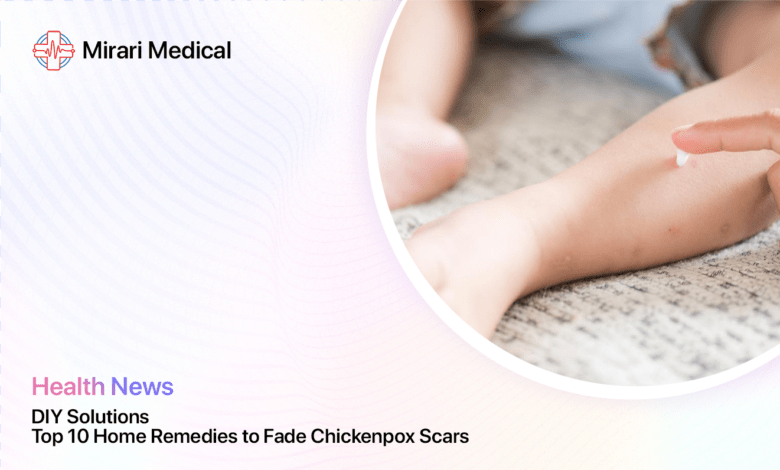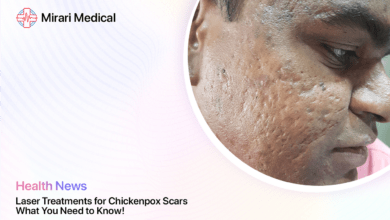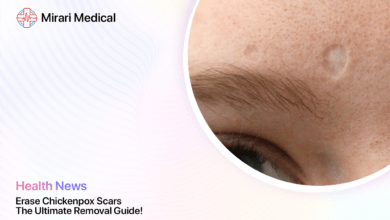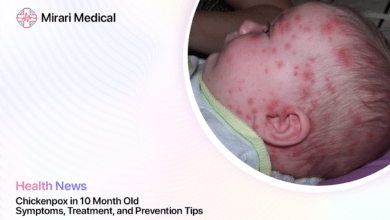DIY Solutions: Top 10 Home Remedies to Fade Chickenpox Scars

You may be interested
Did you know that over 90% of people who have had chickenpox will develop some degree of scarring?[1] While these scars may fade over time, especially in children, many people are left with a lasting reminder of this common childhood illness. If you’re looking for natural treatments for chickenpox scars, you’re in luck! In this comprehensive guide, we’ll explore the top 10 home remedies for chickenpox scars, including aloe vera, coconut oil, bio oil, and more. We’ll also discuss the science behind these remedies and provide step-by-step instructions for using them effectively.
Understanding Chickenpox Scars
Before we dive into the home remedies, let’s take a closer look at chickenpox scars. Chickenpox is caused by the varicella-zoster virus and typically results in itchy, fluid-filled blisters that eventually scab over and heal. However, in some cases, the skin damage caused by chickenpox can lead to permanent scarring[2].
Chickenpox scars can vary in appearance, ranging from small, shallow indentations to more noticeable, pitted marks. They may also be accompanied by changes in skin texture and color, such as hyperpigmentation (darkening of the skin) or hypopigmentation (lightening of the skin)[3].
Types of Chickenpox Scars
There are two main types of chickenpox scars:
- Atrophic scars: These are the most common type of chickenpox scars. They appear as sunken or depressed areas on the skin due to a loss of collagen[4].
- Hypertrophic scars: Less common than atrophic scars, hypertrophic scars are raised and thickened areas of skin that result from an overproduction of collagen during the healing process[5].
Understanding the type and severity of your chickenpox scars can help you choose the most effective home remedies and scar management techniques.
Top 10 Home Remedies for Chickenpox Scars
Now that we have a better understanding of chickenpox scars, let’s explore the top 10 home remedies that can help fade their appearance naturally.
1. Aloe Vera
Aloe vera is a popular home remedy for a variety of skin concerns, including chickenpox scars. The gel from this succulent plant contains compounds that promote skin regeneration, reduce inflammation, and moisturize the skin[6].
To use aloe vera for chickenpox scars:
- Cut open a fresh aloe leaf and extract the clear gel inside.
- Apply the gel directly to the scars, massaging it in circular motions.
- Leave the gel on for 30 minutes, then rinse off with cool water.
- Repeat this process twice daily for best results.
You can also use store-bought aloe vera gel, but make sure to choose a pure, organic product without added ingredients.
2. Coconut Oil
Coconut oil is another versatile home remedy that can help improve the appearance of chickenpox scars. Rich in fatty acids and vitamins E and K, coconut oil deeply moisturizes the skin and promotes collagen production[7].
To use coconut oil for chickenpox scars:
- Warm a small amount of virgin coconut oil between your hands.
- Massage the oil into the scarred skin for 5-10 minutes.
- Leave the oil on for at least 30 minutes, or overnight for maximum benefits.
- Rinse off with lukewarm water and pat dry.
Repeat this process daily, and you may start to notice an improvement in your scars within a few weeks.
3. Vitamin E Oil
Vitamin E oil is known for its skin-healing properties and is often used to reduce the appearance of scars, including those caused by chickenpox. This nutrient-rich oil helps moisturize the skin, reduce inflammation, and promote collagen synthesis[8].
To use vitamin E oil for chickenpox scars:
- Puncture a vitamin E capsule and squeeze the oil onto your fingertip.
- Apply the oil directly to the scars, massaging it in gently.
- Leave the oil on for at least an hour, or overnight for best results.
- Rinse off with lukewarm water and pat dry.
Repeat this process daily, and be sure to use pure, high-quality vitamin E oil for optimal benefits.
4. Bio-Oil
Bio-Oil is a popular over-the-counter product that is specifically designed to improve the appearance of scars, including those caused by chickenpox. This oil-based formula contains a blend of vitamins, plant extracts, and oils that work together to moisturize the skin, reduce inflammation, and promote skin regeneration[9].
To use Bio-Oil for chickenpox scars:
- Apply a small amount of Bio-Oil to the scarred skin, massaging it in circular motions.
- Leave the oil on for at least 30 minutes, or overnight for maximum benefits.
- Rinse off with lukewarm water and pat dry.
Repeat this process twice daily for best results. While Bio-Oil is generally safe for most skin types, it’s always a good idea to perform a patch test before using it on larger areas of skin.
5. Honey
Honey is a natural antibacterial and anti-inflammatory agent that can help fade chickenpox scars over time. Its moisturizing properties also help keep the skin soft and supple, promoting a more even skin texture[10].
To use honey for chickenpox scars:
- Apply a thin layer of raw, organic honey to the scarred skin.
- Cover the area with a bandage and leave it on overnight.
- In the morning, remove the bandage and rinse off the honey with lukewarm water.
Repeat this process nightly for several weeks, and you may start to notice an improvement in the appearance of your scars.
6. Lemon Juice
Lemon juice contains citric acid, which acts as a mild exfoliant and can help lighten hyperpigmented scars. The vitamin C in lemon juice also promotes collagen production and helps brighten the overall complexion[11].
To use lemon juice for chickenpox scars:
- Squeeze fresh lemon juice onto a cotton ball or pad.
- Apply the juice directly to the scars, being careful to avoid any open wounds or cuts.
- Leave the juice on for 10-15 minutes, then rinse off with cool water.
Repeat this process once or twice daily for best results. Keep in mind that lemon juice can make your skin more sensitive to sunlight, so be sure to apply sunscreen before going outdoors.
7. Baking Soda
Baking soda is a gentle, natural exfoliant that can help fade chickenpox scars by removing dead skin cells and promoting cell turnover. Its mild abrasive properties can also help even out skin texture and reduce the appearance of pitted scars[12].
To use baking soda for chickenpox scars:
- Mix equal parts baking soda and water to form a paste.
- Apply the paste to the scarred skin, massaging it in gentle circular motions.
- Leave the paste on for 1-2 minutes, then rinse off with cool water.
Repeat this process 2-3 times per week for best results. Be sure not to leave the baking soda paste on for too long, as it may irritate sensitive skin.
8. Rosehip Oil
Rosehip oil is rich in vitamins A and C, essential fatty acids, and antioxidants that can help improve the appearance of chickenpox scars. This lightweight oil penetrates deeply into the skin, moisturizing and promoting collagen production for a more even, radiant complexion[13].
To use rosehip oil for chickenpox scars:
- Apply a few drops of pure, organic rosehip oil to the scarred skin.
- Massage the oil in gently, using circular motions.
- Leave the oil on for at least 30 minutes, or overnight for maximum benefits.
Repeat this process twice daily for best results. Rosehip oil is generally safe for all skin types, but it’s always a good idea to perform a patch test before using it on larger areas of skin.
9. Oatmeal
Oatmeal is a soothing, anti-inflammatory ingredient that can help reduce redness and irritation associated with chickenpox scars. Its gentle exfoliating properties can also help even out skin texture and promote a more radiant complexion[14].
To use oatmeal for chickenpox scars:
- Mix 1-2 tablespoons of finely ground oatmeal with enough water to form a paste.
- Apply the paste to the scarred skin, massaging it in gently.
- Leave the paste on for 10-15 minutes, then rinse off with lukewarm water.
Repeat this process 2-3 times per week for best results. You can also add a tablespoon of honey or yogurt to the oatmeal paste for added moisturizing benefits.
10. Shea Butter
Shea butter is a rich, nourishing ingredient that can help improve the appearance of chickenpox scars by deeply moisturizing the skin and promoting collagen production. Its high concentration of vitamins A and E also helps reduce inflammation and even out skin tone[15].
To use shea butter for chickenpox scars:
- Warm a small amount of pure, unrefined shea butter between your hands.
- Massage the shea butter into the scarred skin, using gentle circular motions.
- Leave the shea butter on for at least 30 minutes, or overnight for maximum benefits.
Repeat this process twice daily for best results. Shea butter is generally safe for all skin types, but it may cause breakouts in those with acne-prone skin.
Tips for Maximizing the Effectiveness of Home Remedies
While these home remedies can be highly effective in reducing the appearance of chickenpox scars, there are a few additional tips and tricks you can use to maximize their benefits:
- Be consistent: To see the best results, it’s important to use your chosen home remedy consistently, as directed.
- Protect your skin from the sun: Sun exposure can darken scars and make them more noticeable, so be sure to apply a broad-spectrum sunscreen with an SPF of at least 30 before going outdoors[16].
- Keep your skin moisturized: Keeping your skin well-hydrated can help improve its overall texture and appearance, making scars less noticeable. Use a gentle, non-comedogenic moisturizer twice daily[17].
- Don’t pick at scabs: Picking at chickenpox scabs can increase the risk of scarring and prolong the healing process. Allow scabs to fall off naturally, and avoid the temptation to pick or scratch[18].
- Eat a healthy diet: Consuming a diet rich in vitamins, minerals, and antioxidants can help support skin health from the inside out. Focus on foods like fruits, vegetables, whole grains, and lean proteins[19].
- Stay hydrated: Drinking plenty of water helps keep your skin hydrated and promotes a healthy, radiant complexion. Aim for at least 8 glasses of water per day[20].
- Consider combining remedies: Using multiple home remedies in conjunction with one another may provide even better results. For example, you could apply aloe vera gel in the morning and rosehip oil at night.
- Be patient: Fading chickenpox scars takes time, and results may not be noticeable right away. Be patient and consistent with your chosen home remedies, and you’ll likely start to see improvement within a few weeks to a few months.
When to See a Dermatologist
While home remedies can be highly effective in reducing the appearance of chickenpox scars, there may be times when professional treatment is necessary. Consider seeing a dermatologist if:
- Your scars are severe or cover a large area of your body
- Your scars are causing significant emotional distress or self-consciousness
- You’ve tried home remedies for several months without noticeable improvement
- You have a history of keloid scarring or other skin conditions that may complicate treatment
A dermatologist can assess your individual needs and recommend professional treatments, such as laser therapy, dermabrasion, or chemical peels, to help minimize the appearance of your scars[21].
Takeaways
- Chickenpox scars are a common concern, but there are many effective home remedies that can help fade their appearance naturally.
- Top home remedies for chickenpox scars include aloe vera, coconut oil, vitamin E oil, bio oil, honey, lemon juice, baking soda, rosehip oil, oatmeal, and shea butter.
- Consistency, sun protection, moisturization, and a healthy lifestyle are key to maximizing the effectiveness of these home remedies.
- Be patient and give your chosen remedies time to work; results may not be noticeable right away.
- If your scars are severe or causing significant distress, consider seeing a dermatologist for professional treatment options.
By incorporating these natural home remedies into your skincare routine and following the tips outlined in this guide, you can help fade your chickenpox scars and achieve a clearer, more even complexion. Remember, everyone’s skin is different, so be patient and don’t hesitate to consult with a dermatologist if you have any concerns or questions along the way.
FAQs
How long does it take for home remedies to fade chickenpox scars?
The time it takes for home remedies to fade chickenpox scars varies depending on the severity of the scars and the specific remedies used. Some people may start to see improvement within a few weeks, while others may need to use the remedies consistently for several months to achieve noticeable results[22].
Can home remedies completely remove chickenpox scars?
While home remedies can significantly fade and improve the appearance of chickenpox scars, they may not be able to remove the scars completely. The effectiveness of these remedies depends on factors such as the depth and severity of the scars, as well as individual skin characteristics[23].
Are home remedies safe for sensitive skin?
Most home remedies for chickenpox scars are generally safe for sensitive skin, but it’s always a good idea to perform a patch test before applying any new substance to a large area of your skin. If you experience redness, itching, or irritation after using a home remedy, discontinue use and consult with a dermatologist[24].
Can I use multiple home remedies at the same time?
Yes, you can use multiple home remedies for chickenpox scars at the same time, as long as they don’t interact negatively with one another. For example, you could apply aloe vera gel in the morning and rosehip oil at night. However, it’s essential to introduce new remedies gradually and monitor your skin for any adverse reactions[25].
Are there any lifestyle changes that can help fade chickenpox scars?
Yes, certain lifestyle changes can support the effectiveness of home remedies for chickenpox scars. These include maintaining a healthy diet rich in vitamins and antioxidants, staying hydrated, protecting your skin from sun exposure, and managing stress through techniques like meditation or yoga. A holistic approach to skin health can help promote a clearer, more even complexion[26].
References
- Chickenpox (Varicella). (2021, April 28). Centers for Disease Control and Prevention. https://www.cdc.gov/chickenpox/about/index.html
- Chickenpox: Symptoms and Causes. (2021, September 15). Mayo Clinic. https://www.mayoclinic.org/diseases-conditions/chickenpox/symptoms-causes/syc-20351282
- Gozali, M. V., Zhou, B. R., & Luo, D. (2019). Effective treatments of atrophic acne scars. The Journal of clinical and aesthetic dermatology, 12(6), 33–40. https://www.ncbi.nlm.nih.gov/pmc/articles/PMC6579527/
- Connolly, D., Vu, H. L., Mariwalla, K., & Saedi, N. (2017). Acne Scarring—Pathogenesis, Evaluation, and Treatment Options. The Journal of clinical and aesthetic dermatology, 10(9), 12–23. https://www.ncbi.nlm.nih.gov/pmc/articles/PMC5749614/
- Gauglitz G. G. (2013). Management of keloids and hypertrophic scars: current and emerging options. Clinical, cosmetic and investigational dermatology, 6, 103–114. https://doi.org/10.2147/CCID.S35252
- Surjushe, A., Vasani, R., & Saple, D. G. (2008). Aloe vera: a short review. Indian journal of dermatology, 53(4), 163–166. https://doi.org/10.4103/0019-5154.44785
- Lin, T. K., Zhong, L., & Santiago, J. L. (2017). Anti-Inflammatory and Skin Barrier Repair Effects of Topical Application of Some Plant Oils. International journal of molecular sciences, 19(1), 70. https://doi.org/10.3390/ijms19010070
- Keen, M. A., & Hassan, I. (2016). Vitamin E in dermatology. Indian dermatology online journal, 7(4), 311–315. https://doi.org/10.4103/2229-5178.185494
- Bio-Oil Uses. (n.d.). Bio-Oil. https://www.bio-oil.com/en-us/uses
- McLoone, P., Oluwadun, A., Warnock, M., & Fyfe, L. (2016). Honey: A Therapeutic Agent for Disorders of the Skin. Central Asian journal of global health, 5(1), 241. https://doi.org/10.5195/cajgh.2016.241
- Telang P. S. (2013). Vitamin C in dermatology. Indian dermatology online journal, 4(2), 143–146. https://doi.org/10.4103/2229-5178.110593
- Milstone, L. M., Hu, R. H., Dziura, J. D., & Zhou, J. (2012). Impact of epidermal desquamation on tissue stores of iron. The Journal of investigative dermatology, 132(9), 2158–2160. https://doi.org/10.1038/jid.2012.135
- Lin, T. K., Zhong, L., & Santiago, J. L. (2018). Anti-Inflammatory and Skin Barrier Repair Effects of Topical Application of Some Plant Oils. International journal of molecular sciences, 19(1), 70. https://doi.org/10.3390/ijms19010070
- Pazyar, N., Yaghoobi, R., Kazerouni, A., & Feily, A. (2012). Oatmeal in dermatology: a brief review. Indian journal of dermatology, venereology and leprology, 78(2), 142–145. https://doi.org/10.4103/0378-6323.93629
- Lin, T. K., Zhong, L., & Santiago, J. L. (2017). Anti-Inflammatory and Skin Barrier Repair Effects of Topical Application of Some Plant Oils. International journal of molecular sciences, 19(1), 70. https://doi.org/10.3390/ijms19010070
- Skin Cancer Foundation. (2021, May 28). All About Sunscreen. https://www.skincancer.org/skin-cancer-prevention/sun-protection/sunscreen/
- American Academy of Dermatology Association. (n.d.). Dermatologists’ top tips for relieving dry skin. https://www.aad.org/public/everyday-care/skin-care-basics/dry/dermatologists-tips-relieve-dry-skin
- Chickenpox: Diagnosis and treatment. (2021, September 15). Mayo Clinic. https://www.mayoclinic.org/diseases-conditions/chickenpox/diagnosis-treatment/drc-20351287
- Schagen, S. K., Zampeli, V. A., Makrantonaki, E., & Zouboulis, C. C. (2012). Discovering the link between nutrition and skin aging. Dermato-endocrinology, 4(3), 298–307. https://doi.org/10.4161/derm.22876
- Palma, L., Marques, L. T., Bujan, J., & Rodrigues, L. M. (2015). Dietary water affects human skin hydration and biomechanics. Clinical, cosmetic and investigational dermatology, 8, 413–421. https://doi.org/10.2147/CCID.S86822
- Kravvas, G., & Al-Niaimi, F. (2017). A systematic review of treatments for acne scarring. Part 1: Non-energy-based techniques. Scars, burns & healing, 3, 2059513117695312. https://doi.org/10.1177/2059513117695312
- Gozali, M. V., Zhou, B. R., & Luo, D. (2019). Effective treatments of atrophic acne scars. The Journal of clinical and aesthetic dermatology, 12(6), 33–40. https://www.ncbi.nlm.nih.gov/pmc/articles/PMC6579527/
- Kravvas, G., & Al-Niaimi, F. (2017). A systematic review of treatments for acne scarring. Part 1: Non-energy-based techniques. Scars, burns & healing, 3, 2059513117695312. https://doi.org/10.1177/2059513117695312
- American Academy of Dermatology Association. (n.d.). Sensitive skin: Causes, symptoms, and treatments for sensitive skin. https://www.aad.org/public/everyday-care/skin-care-basics/sensitive-skin
- Gozali, M. V., Zhou, B. R., & Luo, D. (2019). Effective treatments of atrophic acne scars. The Journal of clinical and aesthetic dermatology, 12(6), 33–40. https://www.ncbi.nlm.nih.gov/pmc/articles/PMC6579527/
- Schagen, S. K., Zampeli, V. A., Makrantonaki, E., & Zouboulis, C. C. (2012). Discovering the link between nutrition and skin aging. Dermato-endocrinology, 4(3), 298–307. https://doi.org/10.4161/derm.22876
Your trusted source for health info, offering expert advice, news, and tips to stay healthy and informed.




